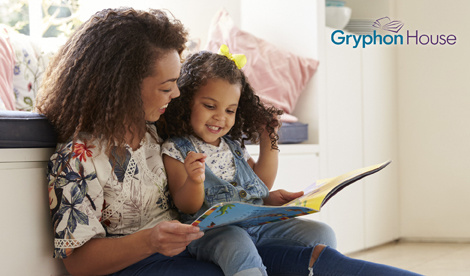
Early literacy is more than teaching a young child to read! It’s everything children know about communication, language- both verbal and nonverbal, reading, and writing before they actually have the skills to read or write. This is why early literacy development is a crucial part of your child’s daily life and why components of early literacy should be included in the daily routine you share with your little learner.
Every parent should understand the importance of reading aloud! Reading aloud with your child not only helps develop the early literacy skills mentioned above, but it forms a connection between you and your child, in turn, laying the foundation for their future literacy learning. From creating a reading nook especially for reading aloud, or including reading in your bedtime routine, there are endless ways you can incorporate early literacy development into your daily life.
Time for a Story, by Amy Brooks Read and Saroj Nadkarni Ghoting, is story time ideas, story time ideas, and advice for parents searching for ways to incorporate early literacy into their homes.
Here are some early literacy development strategies and ideas you can use with your little ones today!
Reading
- Phonological Awareness: As you share books with young children, there are many ways to support phonological awareness, or hearing the smaller sounds in words. This awareness will later help them sound out words when they learn to read.
- Print Awareness: Knowing that print has meaning and how to handle books develops from encouraging babies to explore books and to notice the world around them. As you look at a book with a young child, point to the words in the title and to some of the words in the book, perhaps a repeated phrase. This is how children come to understand that it is the text we are reading, not the pictures.
- Letter Knowledge: Because children learn to identify letters by their shapes, pointing out shapes in shape books is a good first step. We can see shapes all around us, but there are so many books with clear and colorful pictures of the shapes. Because so many letters look quite similar, children try to notice how they look different.
- Vocabulary: Some books, even simple books such as Dear Zoo by Rod Campbell, use interesting words like fierce, fragile, and danger. These are words that we may not use in regular conversations with young children. Using informational or factual books with children offers them different words than the ones we find in stories, so be sure to use these books as well.
- Background Knowledge: Children learn so much about the world through observing, exploring, and hearing you talk about things around them. Books offer opportunities to expose children to things they may not be able to see in their own environments. Books are a window to the world. Choose books on topics that the child shows interest in; offer several books and allow the child to choose.
Playing
- Phonological Awareness: Help children become aware of sounds as they play. Clap out words into syllables. Point out sounds that some of their toys make. Books are often a baby’s first toy. Keep books with animal sounds and rhymes where babies and children can easily play with and explore them.
- Print Awareness: Make books that include pictures of children engaging in play. Add print to play by including signs and labels for familiar objects. Use signs with blocks, label storage containers with words and pictures for manipulatives and toys, and make books available in all play areas.
- Letter Knowledge: Play with puzzles and blocks-with so many shapes, colors, sizes, there are lots of ways to sort and categorize. Play matching and sorting games; notice what is alike and different and include foam, magnet, and block letters. Don’t worry about having the children identify the letters. Just let them feel and play with them.
- Vocabulary: As babies handle objects and toys, describe how the toys feel, what they look like, and the sounds they make. Enhance children’s play by adding new words and descriptions to the words or babbles they use as they play. Children learn new words best when they learn them in context, so playing is a great time to introduce new words. Playtime allows for pretending. You can put words to feelings-the characters they are playing, the children’s feelings, and your own feelings.
- Background Knowledge: Play is a good way to develop background knowledge through role-playing different situations, such as restaurant, doctor’s office, school, car repair shop, or library. Dramatic play and acting out stories together helps children get a sense of story structure.
Author(s)Saroj Nadkarni Ghoting, Amy Brooks Read
A graduate of High Point University, Jenna Roby served as marketing specialist for Gryphon House from 2013-2015.
Topics: